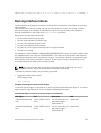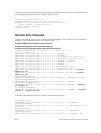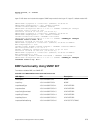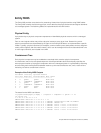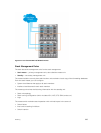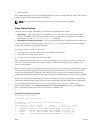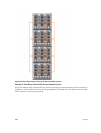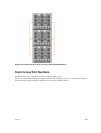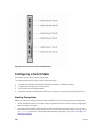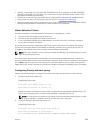
4 Member online MXL-10/40GbE MXL-10/40GbE 9-1-0-853 56
5 Member online MXL-10/40GbE MXL-10/40GbE 9-1-0-853 56
Dell#
Failover Roles
If the stack master fails (for example, is powered off), it is removed from the stack topology.
The standby unit detects the loss of peering communication and takes ownership of the stack
management, switching from the standby role to the master role. The lack of a standby unit triggers an
election within the remaining units for a standby role.
After the former master switch recovers, despite having a higher priority or MAC address, it does not
recover its master role but instead takes the next available role.
MAC Addressing
All port interfaces in the stack use the MAC address of the management interface on the master switch.
The MAC address of the chassis in which the master MXL switch is installed is used as the stack MAC
address.
The stack continues to use the master’s chassis MAC address even after a failover. The MAC address is
not refreshed until the stack is reloaded and a different unit becomes the stack master.
Stacking LAG
When multiple links are used between stack units, the Dell Networking OS automatically bundles them in
a stacking LAG to provide aggregated throughput and redundancy.
The stacking LAG is established automatically and transparently by the Dell Networking OS (without user
configuration) after peering is detected and behaves as follows:
• The stacking LAG dynamically aggregates; it can lose link members or gain new links.
• Shortest path selection inside the stack: If multiple paths exist between two units in the stack, the
shortest path is used.
Supported Stacking Topologies
Stacking is supported on the MXL switch in ring and daisy-chain topologies.
Example 1: Dual-Ring Stack Across Multiple Chassis
Using two separate stacks in a dual-ring stacking topology provides redundancy and increased high
availability in case of stack failure. Also, stacking upgrades are simplified when you have to take one stack
offline, as shown in the following example.
NOTE: A ring topology is recommended under normal operation because it provides increased
resiliency when compared with a daisy chain topology. In daisy chain topology, any change in a
non-edge stack unit causes a split stack.
Stacking
885



